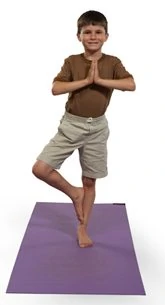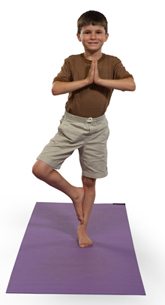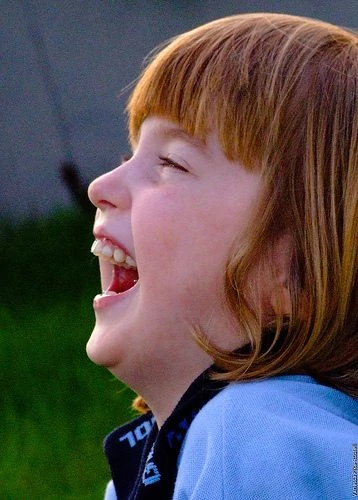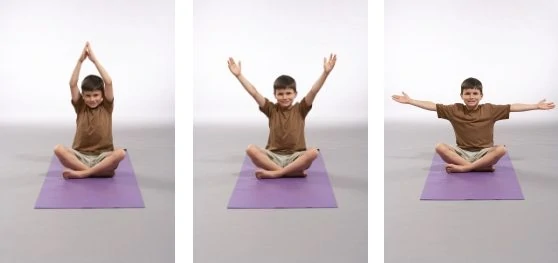The benefits of yoga poses aren’t always apparent to kids. In fact, the poses can sometimes cause frustration, for in asking students to work at holding poses, we’re asking them to start being present in their bodies and to push past boredom and impatience. Hearing children complain, some teachers and parents can’t see beyond those frustrations, and the students drop the practice.
Children are just like us: Even though we know certain things are good for us, we sometimes resist, get bored, give up. But kids who stay with the practice do come to appreciate what we’re teaching them to do. I remember one boy who “quit” yoga for several months before returning to class, saying, “I forgot how good this feels to my body.”
I find it’s important to educate adult Yoga Calm users about the benefits and to help them know that while students may complain about it – like they do any practice – encouraging them to stay with it will give them life long skills.
Here are a few things I do to help kids understand the yoga and enjoy it more:
- I tell stories about my own practice: how sometimes I get bored in downward dog and that I’ve been practicing for 30 years and sometimes don’t want to do yoga, but I remember how important it is to be physically strong and want to be strong for them. I encourage them to tell me why they want to be strong physically and ask them how the poses are helping them become strong. If this is discussed in class, they’ll become able to verbalize reasons for staying with the practice.
- I teach students to practice opening and closing their bodies – either in relaxation or in a walking game – and let them know that at any time they can close their body if they need personal space. I give them lots of permission to “go in” when they need to and make sure they see how I value closing as much as opening.
- Using a drum and moving through the poses quickly can help lift energy. Sometimes when a class is dragging, I do a “sun salutations”-type flow to the count of two. This gets the kids moving a little faster, giving them less time to notice if they’re bored or tired.
- I ask the students to lead poses and determine how long to hold them – for instance, for how many drum beats to hold Plank. I find that they’ll work much harder if they are led by another student and deciding for themselves which poses to do (a lesson built into our Flying Eagle DVD). I also ask them to think of a goal they have and find a pose that will help them achieve that goal. Some choose physically strengthening poses and others choose heart thoughts. Continuing to ask them to verbalize why the poses are valuable to them helps them stay with the practice, and you can share those insights with parents, administrators or others who may ask about the benefits of physical poses.
- Similarly, sharing the value yoga has for you with your students can also help. Children’s bodies know that yoga is valuable, but sometimes they have to tell the brain why it is important, especially when the mind is sending negative or frustrating thoughts. I find that kids love hearing real stories about adults. You can also find good stories at the end of Yoga Journal that are both inspiring and appropriate for children.
- Peppering in new games and activities can also help keep a class focused and energized just by giving an element of surprise. Keeping abreast of new activities is one big reason people stay in touch with us and colleagues they’ve taken Yoga Calm trainings with. Community is such a big part of what we do – not just as teachers, counselors and other professionals who work with children, but as human beings.
Recently, I read a powerful and poignant story about a boy who watched a moth emerge from its cocoon. The moth struggled to release itself from the cocoon, so it stopped to rest. But the boy thought it was stuck. He got scissors and cut open the cocoon so the moth could be free. The moth died. The boy learned that the struggle to emerge was essential to the survival of the moth.
I try to remember this when the children are struggling or I hear others say that yoga sometimes agitates the children. But if we make it too calm, the children won’t grow through the difficult process of emerging.
– Lynea






